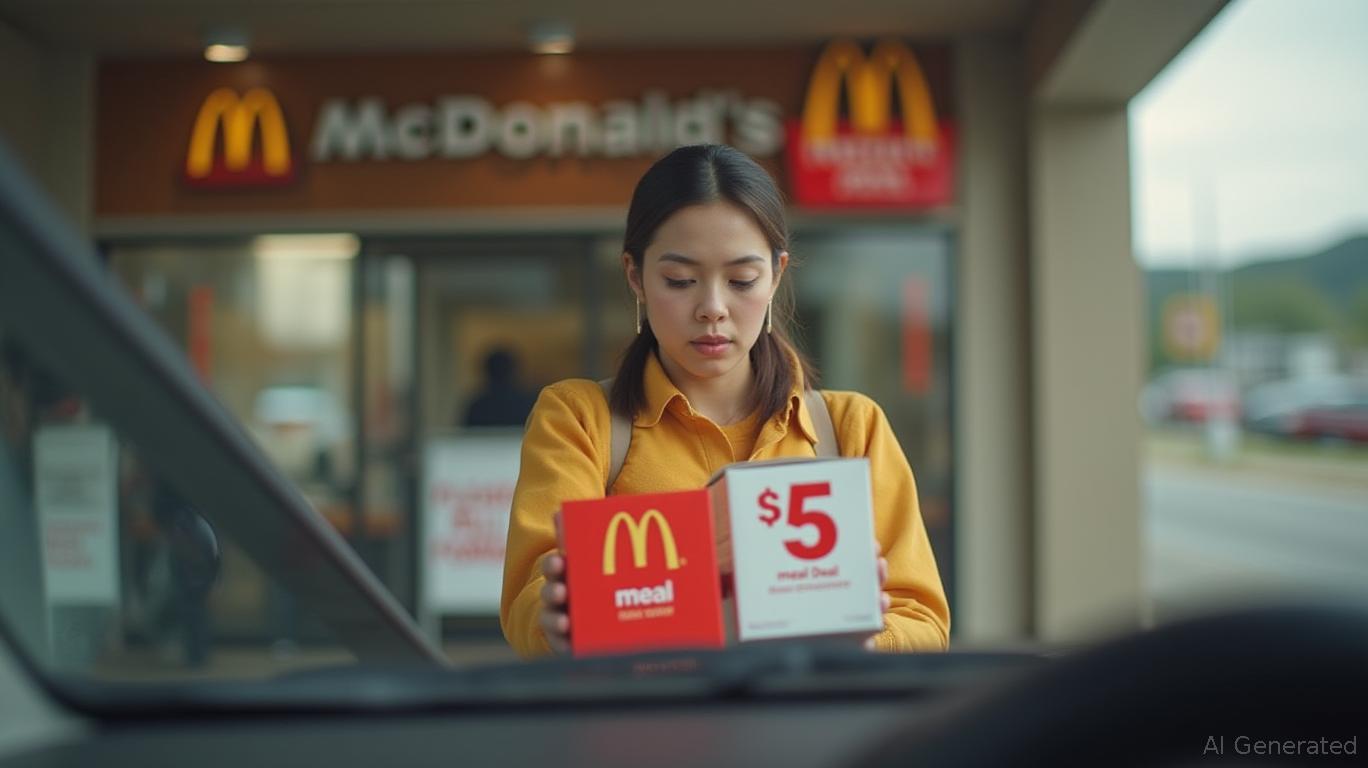McDonald's Q1 Earnings Miss: Value Strategies and Global Execution Under the Microscope
The first quarter of 2025 presented a stark reality for
(MCD): a 3.6% year-on-year decline in U.S. same-store sales—the worst since the pandemic—coupled with a broader global slowdown. While the $5 Meal Deal and new product launches like the McCrispy Strips offered glimmers of hope, investors are left questioning whether the fast-food giant can stabilize its trajectory amid macroeconomic headwinds. This article dissects McDonald's recent performance, evaluates the sustainability of its value-driven strategies, and weighs the risks and opportunities for long-term investors.The U.S. Dilemma: Traffic Declines and Economic Anxiety
McDonald's U.S. sales slump was driven by a perfect storm of factors: harsh winter weather, lingering inflation, and a sharp drop in traffic from middle- and low-income consumers. CEO Chris Kempczinski highlighted that the $5 Meal Deal, part of the McValue platform, has become a critical lifeline for retaining price-sensitive customers. However, the meal deal's success remains uneven, as the U.S. accounts for nearly half of global sales, and its recovery is pivotal.

The Q1 miss underscores a deeper challenge: McDonald's ability to balance value without eroding margins. While the $5 Meal Deal has drawn crowds, its impact on profitability is still unclear. Analysts will watch closely to see if the U.S. sales decline accelerates or stabilizes in Q2, especially as the company extends the meal deal into summer.
International Markets: A Mixed Bag of Growth and Challenges
Outside the U.S., McDonald's results were uneven. The International Developmental Licensed Markets (IDLM), including Japan and the Middle East, posted a robust 3.5% sales growth, driven by localized value initiatives and new product launches. These regions now serve as a critical growth engine, offsetting sluggishness in operated markets like the U.K., where restructuring efforts have caused operational hiccups.
However, the global comparable sales dip (1%)—excluding Leap Day effects—reflects broader macroeconomic pressures. While McDonald's has leaned into menu innovation (e.g., the Minecraft promotion, which caused supply shortages), such tactics are short-term fixes. The real test lies in whether its “Accelerating the Organization” restructuring program can boost efficiency and reduce execution risks in key markets.
Margin Stability: A Testament to Cost Discipline
Despite the sales slump, McDonald's maintained an operating margin of 44.5%, in line with 得罪 levels. This stability is a testament to franchisee resilience and cost controls, particularly in high-margin items like beverages and desserts. Franchisees, who operate 93% of global locations, have been crucial in navigating inflation and labor pressures. The company's focus on technology—such as mobile ordering and AI-driven inventory management—also hints at long-term margin protection.
Catalysts for Recovery: Value, Innovation, and Global Expansion
- Value Strategies: The $5 Meal Deal's extension into 2025 signals management's commitment to anchoring value-driven traffic. If the program can stabilize U.S. traffic without cannibalizing higher-margin items, it could become a long-term growth lever.
- New Product Pipeline: The McCrispy Strips and returning snack wraps aim to reignite curiosity among younger demographics. Their success in driving repeat visits will be key.
- International Momentum: The IDLM segment's 3.5% growth suggests that McDonald's can capitalize on emerging markets, provided local teams execute effectively. The plan to open 2,200 new restaurants globally in 2025, particularly in Asia-Pacific, offers scalability.
Risks and Considerations
- U.S. Recovery: A prolonged sales slump in the U.S. could pressure margins and investor sentiment. The company's ability to re-engage middle-income households—whose traffic fell sharply—is non-negotiable.
- Inflation and Input Costs: Rising commodity and labor costs remain a threat, though franchising models and pricing flexibility provide some buffer.
- Global Volatility: Geopolitical risks, such as trade tensions impacting supply chains, could disrupt operations in key regions.
Investment Thesis: A Wait-and-See Approach
At current levels, McDonald's stock trades at 23x trailing 12-month EPS, slightly below its five-year average of 25x. While the Q1 miss justifies some skepticism, the company's balance sheet (with $3.9 billion in net cash) and dividend yield of 1.8% offer downside protection.
Investors should focus on two near-term catalysts:
1. U.S. Sales Turnaround: A stabilization or rebound in Q2 same-store sales would alleviate concerns about the $5 Meal Deal's efficacy.
2. Global Execution: Strong performance in high-growth markets like Japan and the Middle East could offset U.S. weakness and support margin stability.
Final Verdict
McDonald's remains a defensive play in the consumer discretionary sector, but its current valuation demands tangible progress. For now, the stock presents a hold recommendation. Aggressive buyers might consider a gradual position-building strategy at dips, targeting entry points below $220—a level that would reflect a 15% discount to its 52-week high. However, investors should avoid overcommitting until the U.S. sales trajectory clarifies and international execution proves sustainable. The fast-food titan isn't dead, but its revival hinges on balancing affordability with profitability—a tightrope walk that will define its next chapter.
Final Note: Monitor McDonald's Q2 earnings for updates on U.S. traffic trends and margin resilience.
Moreover, historical backtests reveal that a strategy of buying 5 days before earnings and holding until the next announcement delivered a -81.47% CAGR from 2020 to 2025, underscoring the risks of earnings-driven timing.
Sign up for free to continue reading
By continuing, I agree to the
Market Data Terms of Service and Privacy Statement

Comments
No comments yet